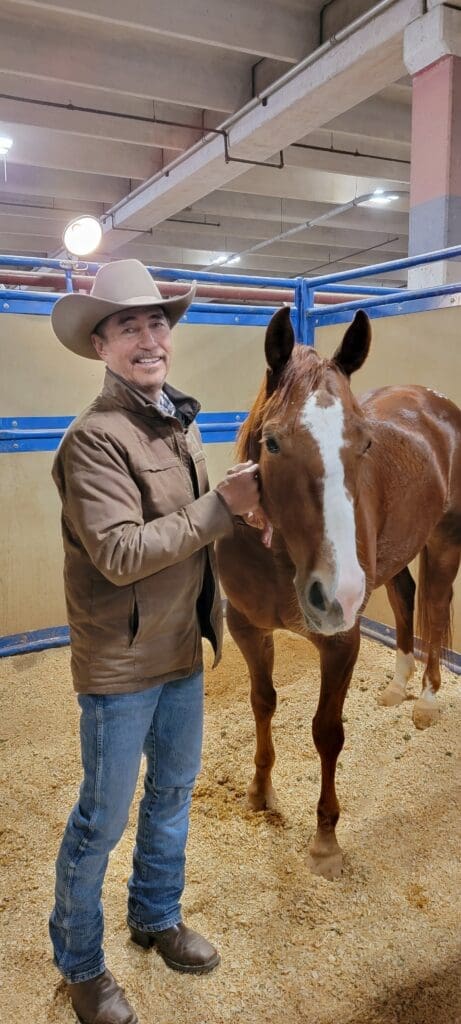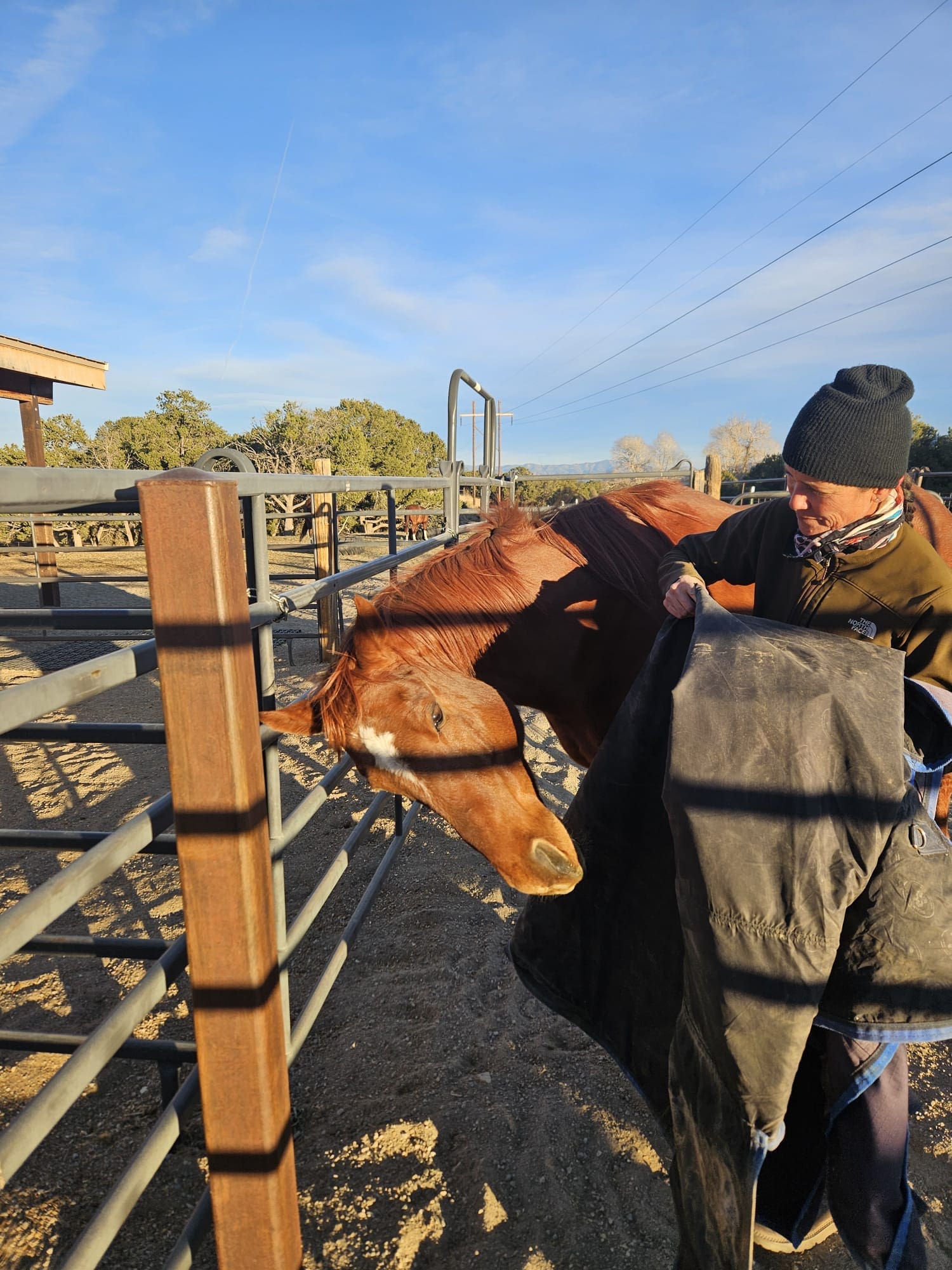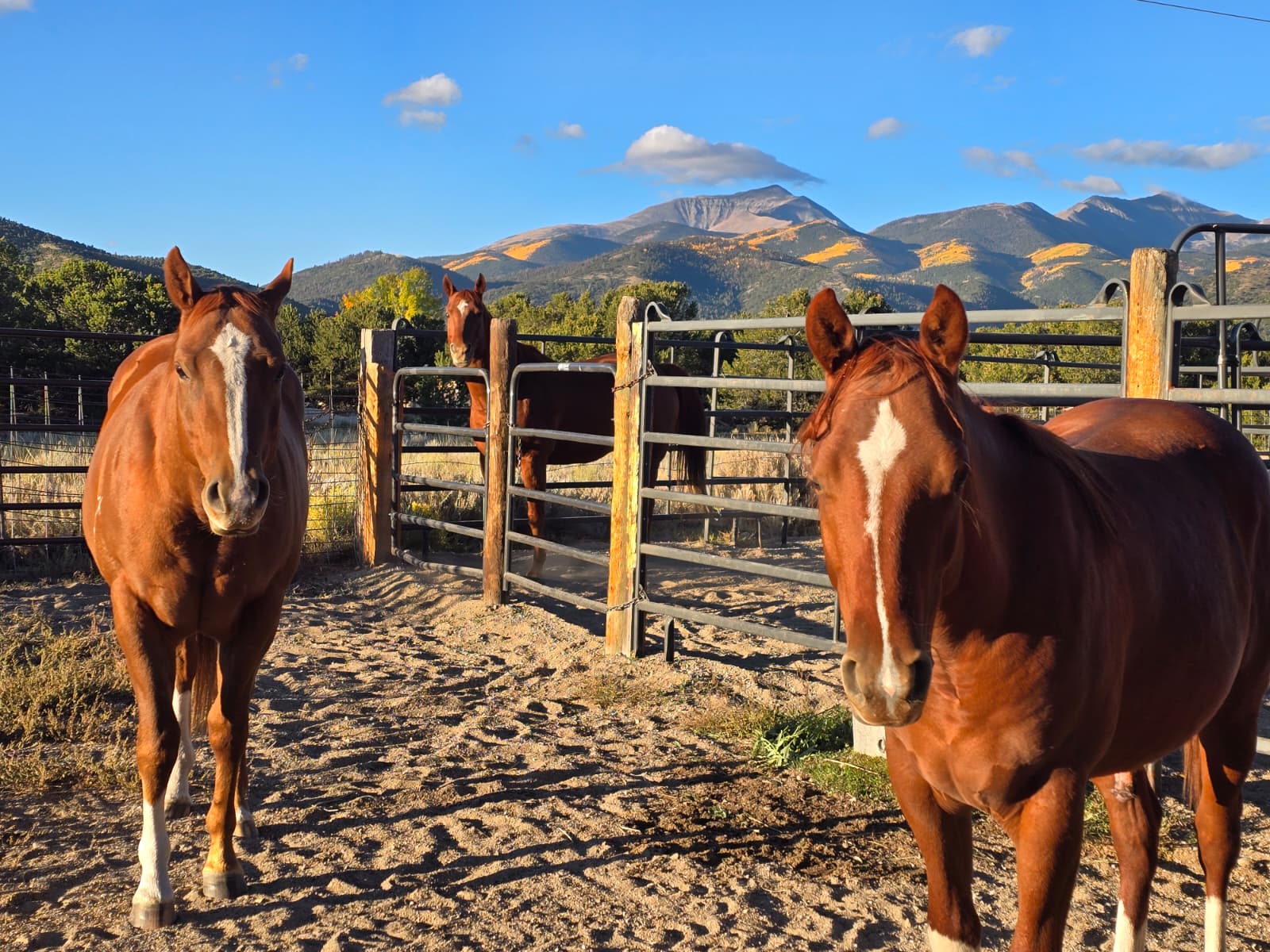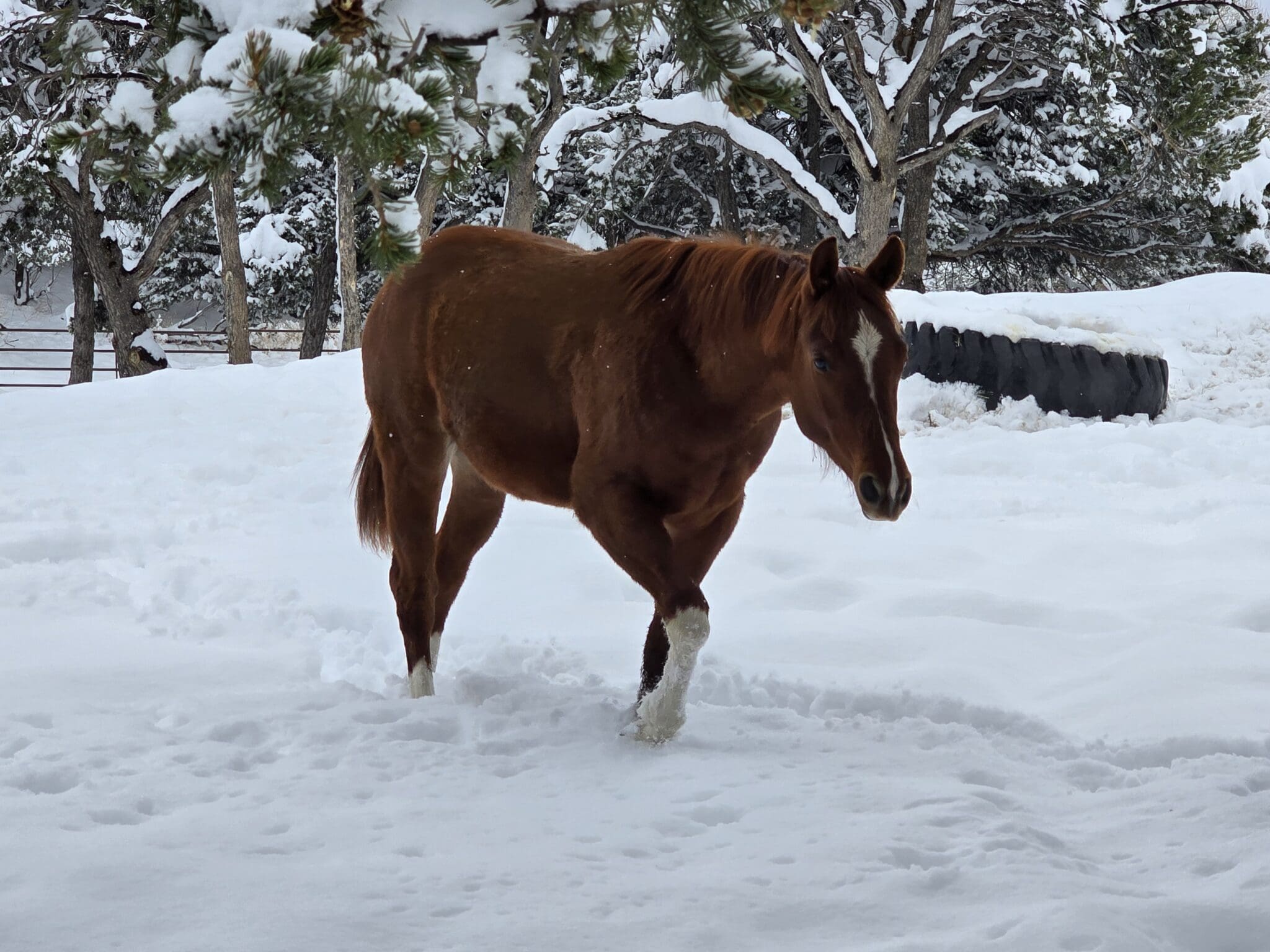Every Horse Has a Story—What’s Yours?

Rich is meeting Tomcat for the first time, just after the auction.
In my online coaching program, one of the first assignments I give my students is to compile their horse’s training history, evaluate their temperament, and rate how well-trained—or easy to ride—they are. It’s not busy work. This exercise gives me valuable insight into a horse I may never see in person, and it helps the rider understand their horse on a deeper level.
The Assignment
Part 1:
Find out as much as you can about your horse’s history. If there’s no hearsay or written record, use your best guess based on what you know and what you can find out.
Part 2:
Do a complete training assessment before setting any training goals. On a scale of 1–10, with 10 being a “push-button,” finished show horse and 1 being an untrained two-year-old, rate your horse on these qualities:
- Easy to ride
- Smooth-gaited, sure-footed, steady speed
- Always in control, rarely spooks
- Stands quietly for mounting
- Stops promptly with light aids
- Moves forward with light aids
- Can canter figure-eights with lead changes (with a qualified rider)
- Has competition-level skills (with a qualified rider)
- Is experienced in all locations and situations
- Loads in a trailer and ties well
Total the ten scores for a percentage. As with equestrian competition scoring, 70% is an average score and represents a well-trained horse.
Then comes my favorite question in the assignment; the one I put the most stock in:
If you added up all your horse’s actual riding, the number of days in his lifetime he was saddled and ridden by anyone–subtracting idle time—how many days would it be?
Some students can’t be bothered and skip the math problem and sleuthing. That tells me something about the student. But the ones who put in the effort—and do it honestly—give me a crystal clear picture of where their training plan is starting from.
Why This Matters
Every horse I work with—whether it’s in person or from afar—gets an evaluation in my head, sometimes on paper. I piece together their story from whatever clues I have:
- Age, breed or type, pedigree (if known)
- Conformation and body condition
- Temperament and behavior patterns
- Scars, brands, tattoos, wear-and-tear
- Region of the country and circumstances that led the horse to me
Even when there’s no formal history, there’s always a story to be told. With decades of experience riding and training literally thousands of horses, I can often read between the lines and develop a plausible ‘working theory’ on a horse just through observation and asking a few questions. But for newer riders, it takes more sleuthing—asking questions, consulting experts, and even using DNA testing to learn more.
Horses are learning machines. They don’t forget what they’ve been taught—or what they’ve survived. Whether it’s good training or bad experiences, those lessons stay with them. Piecing together the most plausible history you can will guide your training objectives. It pays to mine the data.
Different Stories, Different Approaches
Think about how differently you’d approach these horses:
- A rounded-up mustang that’s never been handled
- A six-figure warm blood trained for dressage
- An eight-year-old off-the-track Thoroughbred (OTTB)
- A retired team-roping horse
- A two-year-old that looks Arabian, but ended up in a rescue with no history
- A middle-aged draft-cross mare that’s had many foals
Each has unique experiences, gaps in training, and challenges. Each needs a customized plan.
Buyer Beware
Buying a horse at auction—whether a low-end horse sale or a high-profile performance horse sale—is risky for the average person. Without deep industry knowledge and lots of practice evaluating horses, it’s easy to make a costly mistake. But for those with the right expertise, these settings can present incredible opportunities.
This Month’s Video
In the video: You’ll meet Katz in a Kradle—barn name Tomcat—our young cutter and an own son of the legendary Highbrow Cat, one of the greatest cutting horse sires of all time. Just four years old when we bought him, Tomcat had been shown only once, finishing “in the money.” I’ll walk you through my thought process in evaluating him at a premier cutting horse sale, the clues I pieced together from limited information, and how our bidding strategy paid off with a horse who has turned out to be everything we hoped for—and more.
At these sales, you don’t get to ride the horse, talk to the trainer, or sometimes even see the horse up close before the auction. You work from pedigree papers, performance records, and a quick look from the stands. There are always gaps in the story, but with enough knowledge of the horse industry—and what goes on behind the scenes—you can connect the dots.
In Tomcat’s case, he turned out to be exactly what we hoped for… and then some.
Your Turn
If you’re serious about improving your horsemanship, start by discovering your horse’s story. Every detail you uncover helps you train smarter, ride better, and build a stronger partnership.
Want help evaluating your horse and creating a personalized training plan? My Online Coaching Program gives you direct guidance, structured assignments, and feedback tailored to you and your horse. You’ll also find practical tools, videos, and the equipment I personally use in my online store to help you reach your goals faster.
Enjoy the ride!



